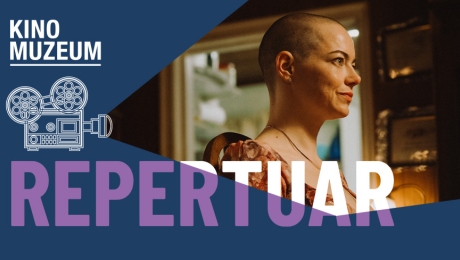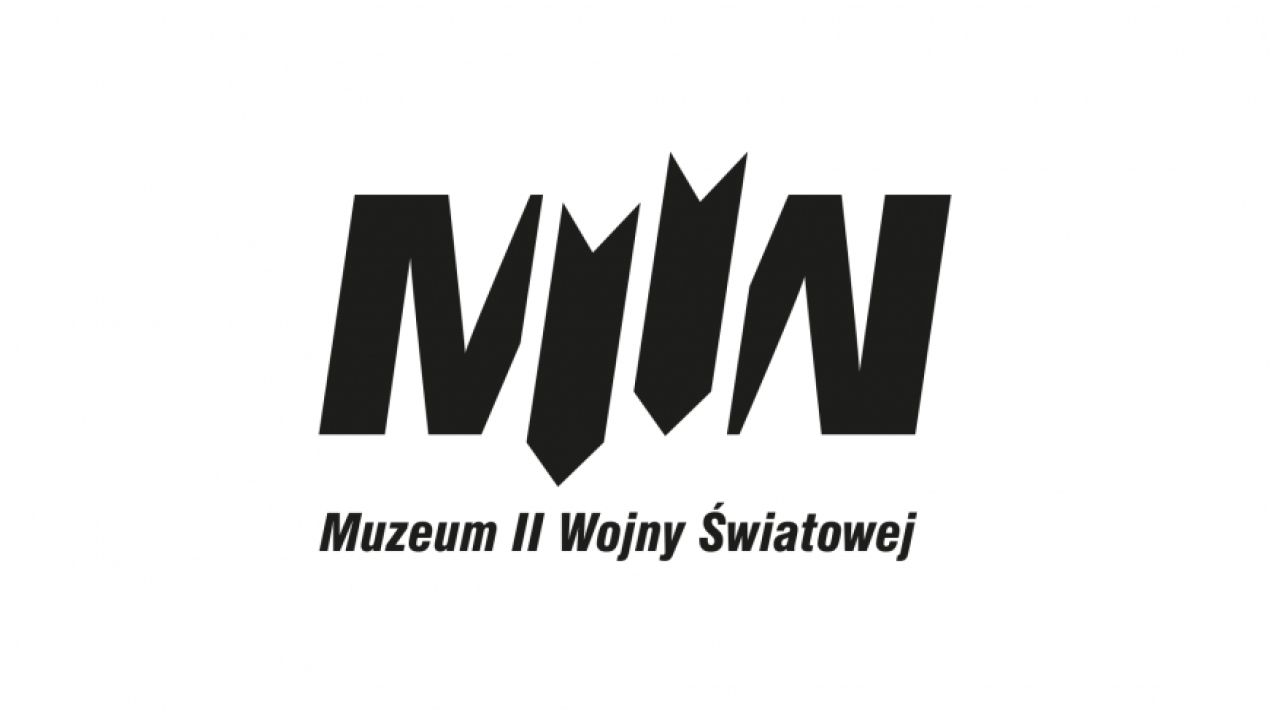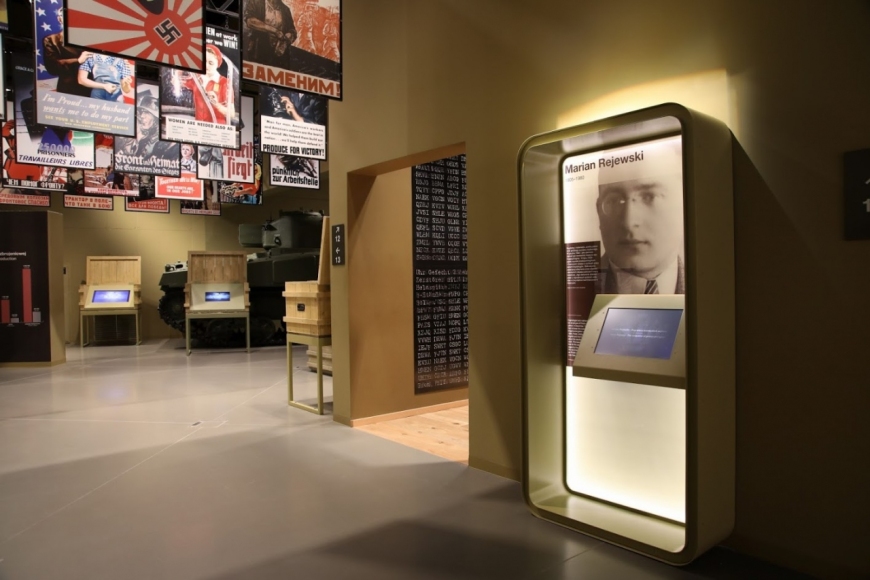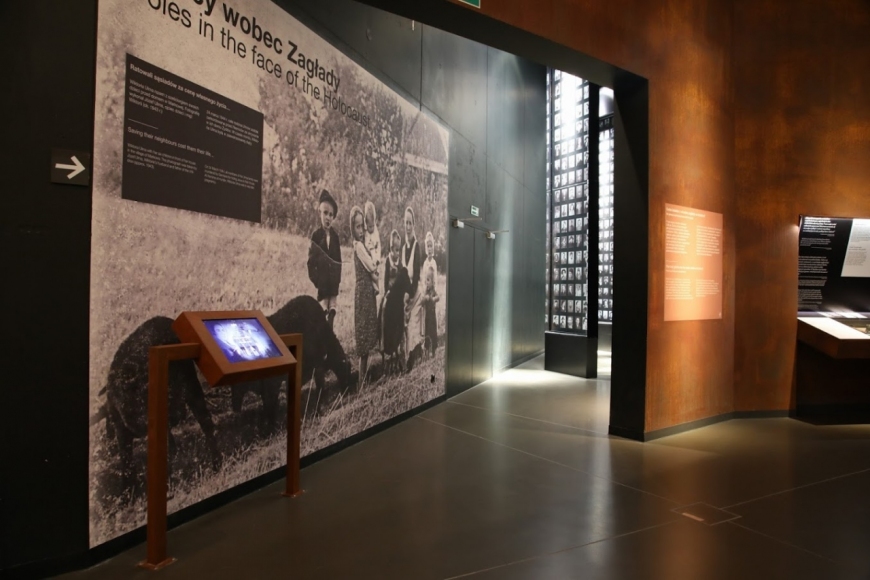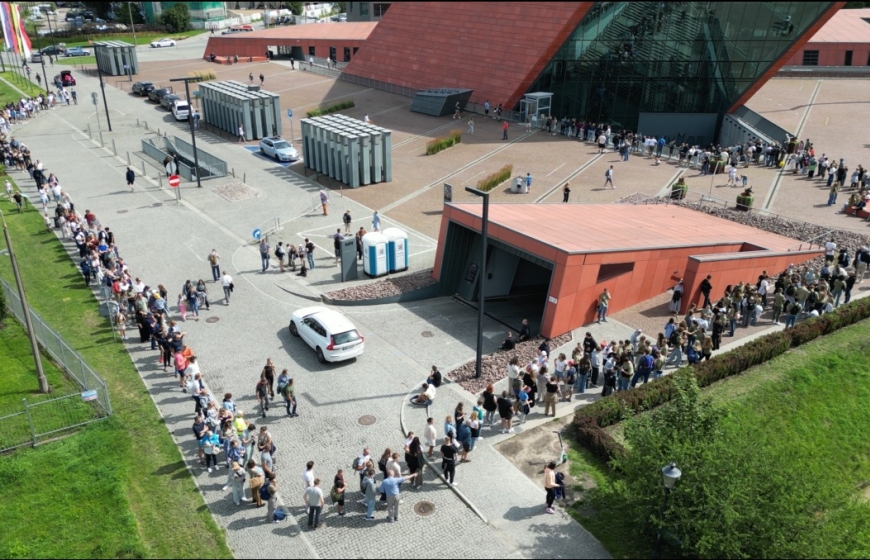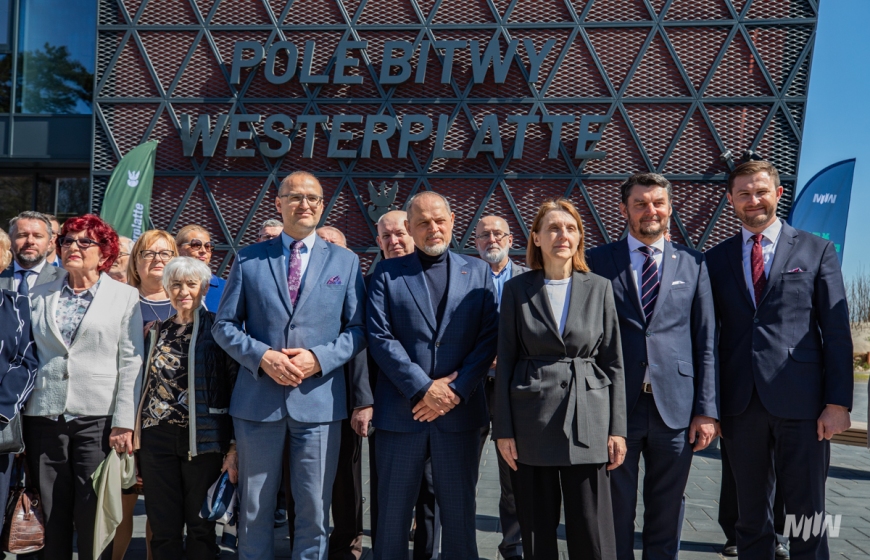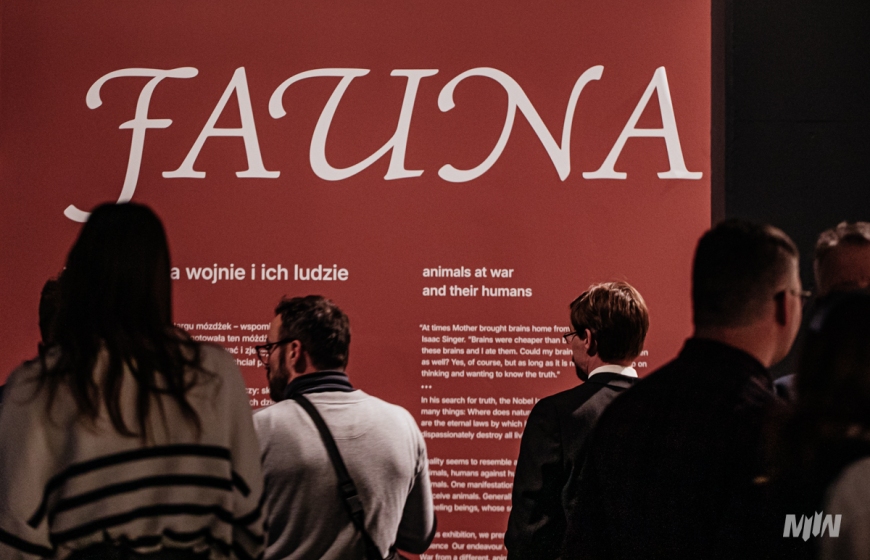The Statement by Dr. Karol Nawrocki, the director of the Museum of the Second World War in Gdansk, concerning the court case brought against the Museum WWII regarding the claim by the claimants to remove new content from the main exhibition.
On 1 April this year, another hearing concerning the demand to remove the changes and additions introduced in the years 2017-2018 to the main exhibition of the Museum of the Second World War in Gdansk was scheduled to take place in the District Court in Gdańsk. The changes were designed and implemented by the Permanent Exhibition Evaluation Team I appointed and they were supervised by the Head of the Scientific Department, Dr. Marek Szymaniak. However, owing to an important setback caused by the necessity of counteracting the threat of SARS-CoV-2 virus, the Court duly and reasonably ruled to cancel the scheduled hearing.
In anticipation of the new date of the hearing, I would like to recall the essence of the claims laid out by the former Museum management, which focused on demands to remove newly introduced content and exhibits from the exhibition, including, among others, the complete removal of the Ulma Family story from the exhibition.
These claims are being made even though all of the introduced changes and additions were carried out with utmost professional care to retain the existing exhibition format. The new narrative threads, with special attention to their subject matter and their placement within the exhibition, seamlessly blend in with the already existing threads. Paweł Machcewicz and the other claimants filed a lawsuit against the Museum of the Second World War for alleged breach of their copyright to the entire exhibition.
One should emphasize here that none of the other authors of the exhibition has engaged in a legal dispute with the Museum. The representatives of the former management of the Museum of the Second World War in Gdansk attempt to reserve their four-person team the right to decide which of the exhibits owned by the Museum are liable for display at the permanent exhibition. With such an understanding they actually attempt to create a situation in which the director of a state cultural institution is barred the right to be able to transfer the collections under his care from the storehouses to the exhibition. According to the claimants, each of them would separately have to grant the consent to do so.
With regard to the new content introduced to the museum's main exhibition, the claimants reserve the right to alter the current shape of the main exhibition by removing the events and figures that are crucial to the Polish and worldwide collective memory of World War II. By doing so, by means of a legal lawsuit, they simply try to secure their selfish agenda, with complete disregard for the narrative threads that may be important for a considerable part of museum visitors.
The former management demand that the following parts of the main exhibition be removed or reinstated:
1. Removal of Father Maximilian Maria Kolbe's portrait from the main exhibition of the together with a multimedia stand dedicated to his figure.
2. Removal of the portrait of Witold Pilecki's portrait together with a multimedia stand dedicated to his figure.
3. Removal of the photo of Warsaw insurgents taking the military oath during the Holy Mass before joining the unit.
4. Removal of the Ulma family photographs and a multimedia stand "Poles Rescuing Jews".
5. Removal from the main exhibition of the Museum of the Second World War in Gdansk of the Blessed Stefan Wincenty Frelichowski's (victims of the Dachau Concentration Camp) posthumous mask together with the exhibition part dedicated to the execution of clergymen in concentration camps.
6. Removal from the main exhibition of the Museum of the Second World War in Gdansk of the exhibit "List of Poles murdered in KL Dachau" written in 1946 by the team of Fr. Edmund Khart (a prisoner of Dachau).
7. Removal of the Polish national flag saved from destruction in Soviet-occupied Lviv and of a mock-up poster showing the the Belarusian minority's welcome of the Red Army entering Poland after September 17, 1939 (i.e. the exhibit which had to be returned to the owner due to the expiry of the lending period agreed by the previous management).
8. Removal of the exhibit dedicated to Major Henryk Dobrzański "Hubal" from the main exhibition of the the Museum of the Second World War in Gdansk;
9. Removal from the main exhibition of the Museum of the Second World War in Gdansk of the exhibit devoted to Marian Rejewski, the Polish cryptologist who broke the Enigma code in December 1932.
10. Removal from the main exhibition of the Museum of the Second World War in Gdansk of the exhibit "Nagant revolver" – an example of the type of weapon used by Stalinist executioners in the years 1937-1938 to murder national minorities in the Soviet Union, including during the so-called anti-Polish operation against Polish national minority, and reinstating of the board game "Five Year Plan" instead.
11. Removal from the main exhibition of exhibits in the form of a "Drawing of the Virgin Mary" and a fragment of a striped jacket with a camp number made after the war by a prisoner of KL Mauthausen as part of therapy to help him recover from the nightmare of camp experience.
12. Removal of the plaques from the main exhibition of the MIIWŚ: The stigma of war (showing mental and physical mutilation suffered by people during the war), and the Soviet Union. Communist state of mass terror and the (anti)Polish Operation NKVD 1937-1938. Soviet genocide on Poles.
13. Removal from the main exhibition of the MIIWŚ, in the section devoted to partisan resistance, new text fragments inserted in the introductions on the Soviet, Polish, French and Yugoslavian partisans.
14. Removal from the main exhibition of the MIIWŚ of a statistical casualties chart of selected countries (21 in total) presented in relative and absolute values as an infographic, and reinstating previous statistical data chart, considered appropriate by Pawel Machcewicz and the claimants, citing as "victims of war" e.g. German soldiers and including data relating to selected 10 countries presented in absolute values only.
15. Removal of "The Invincibles" film by the Institute of National Remembrance from the main exhibition and reinstating of the film "The diptych" whose soundtrack had not been licensed by the previous management.
16. Reinstating the original stage design of the main exhibition in the part devoted to the Polish Underground State, whose visibility was largely obscured in such a way that the visitors failed to notice "Irena Sendler" exhibit.
17. Moving "Captain Antoni Kasztelan" exhibit to its original place of presentation, i.e. to the showcase with "Rudolf Spanner" exhibit.
For some unexplained reasons, the claimants have consistently failed to question the change in the form of a large-format wallpaper dedicated to the "Dark and Silent" soldiers. They also are not appalled by the addition in the form of "Jewish prayers for the dead" audio soundtrack or multimedia display "German repressions against Poles in the Free City of Gdansk", even though all of these additions, just like those previously discussed, were introduced in the same manner, following the historical evaluation of the Permanent Exhibition Evaluation Team.
Finally, I clearly wish to emphasize that as the Director of the Museum of the Second World War in Gdansk, the state cultural institution that I manage, I am truly determined to stand by ALL of the new additions to the main exhibition mentioned above. Contrary to the questionable accusations by the claimants, proposed, among others, in complete disregard to the narrative present in Norman Davis' book, Europe Fights ( former member of the Scientific Council of the Museum of the Second World War), I refuse to remove the figure of Father Maximilian Kolbe or the story devoted to pre-war slaughter of the Polish minority in the USSR from the main exhibition. I refuse to remove from the main exhibition the story of the Ulma family – a symbol of the Polish victimhood while saving Jews during WWII. I refuse to accept the demands to downplay the role of Captain Antoni Kasztelan by reducing his story to that of the subject of medical experiments, and I struggle to comprehend the blatant disregard Paweł Machcewicz and other claimants have displayed towards the family's protests concerning the earlier location within the main exhibition of the precious exhibits devoted to Captain Kasztelan.
As the director of the Museum of the Second World War in Gdansk, I would like to reassure you that museum staff and I are determined to preserve all the changes introduced to the main exhibition in 2017-2018. The practice of constantly supplementing permanent exhibitions by the directors of various museums is a natural thing both in Poland and worldwide. The particular agenda of the former museum management, therefore, should not make the Museum of the Second World War in Gdansk an exception in this respect.
With kindest regards,
Dr. Karol Nawrocki
Director of the Museum of the Second World War in Gdańsk









